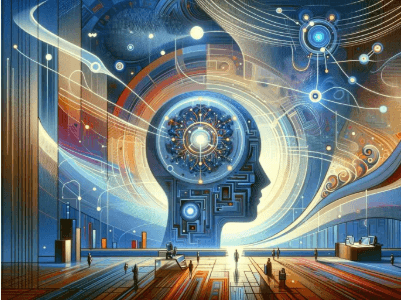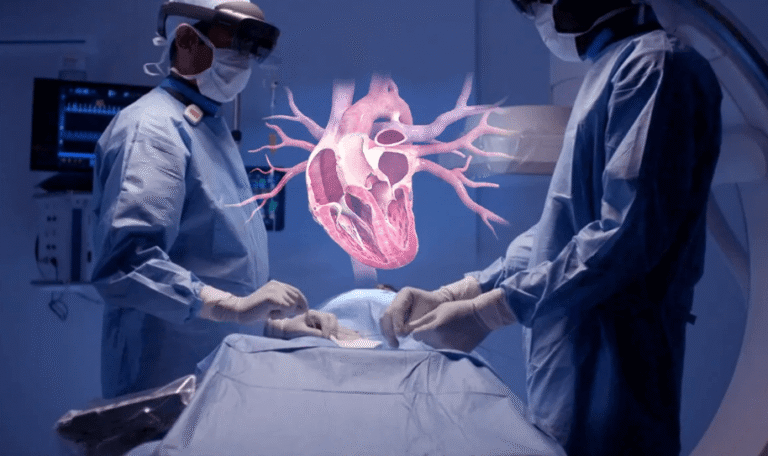How Does AI Work: Inside the Magic
Introduction
Artificial Intelligence (AI) is no longer just a buzzword—it’s a rapidly growing reality impacting everything from voice assistants to medical diagnostics. But despite its prevalence, many people still wonder: how does AI work? Understanding what happens behind the scenes—how data is processed, how decisions are made, and what makes some AI systems smarter than others—not only satisfies curiosity, it builds trust. In an era when expertise, experience, authoritativeness, and trustworthiness (EEAT) matter more than ever, knowing what goes on under the hood helps users separate hype from substance. This article breaks down AI in user-friendly terms, explains the key components like machine learning, neural networks, and algorithms, and addresses common questions people ask about how AI works—all grounded in credible, up-to-date information.
What Is Artificial Intelligence?
AI refers to systems or machines that mimic human intelligence to perform tasks and can improve themselves based on the information they collect. These tasks include understanding language (NLP), recognizing images, making decisions, forecasting trends, and more.
Key related terms:
- Machine Learning (ML): A subset of AI where systems learn from data without being explicitly programmed for every scenario.
- Deep Learning: A branch of ML that uses neural networks with many layers to model complex patterns (e.g. image recognition, speech).
- Narrow vs. General AI: Most AI today is narrow (designed for specific tasks). General AI—matching or exceeding human intelligence broadly—remains theoretical.
The Core Process: How AI Learns and Works
To understand how AI works, it’s helpful to look at the typical steps involved in building an AI system:
- Defining the Problem / Task
Decide what the AI should do: classify, predict, generate, optimize, etc. This could mean teaching an AI to identify cats in photos, translate text, or recommend a movie. - Gathering and Preparing Data
AI learns from data. The data might be labeled (supervised learning) or unlabeled (unsupervised), or maybe partially labeled (semi-supervised). Data must be cleaned, transformed, and structured. - Choosing Models and Algorithms
Algorithms are instructions or procedures the system follows. The model is the structure built using data and algorithms. There are many types: decision trees, support vector machines, neural networks, etc. - Training
Here, the model ‘learns’ by adjusting its internal parameters to minimize error (difference between predicted output and true output). Training often involves many iterations, using gradient descent or similar optimization methods. - Evaluation and Testing
After training, the model is tested on new data to check how well it generalizes (avoids overfitting). Metrics like accuracy, precision, recall, F1-score (for classification) or mean squared error (for regression) are used. - Deployment & Feedback Loop
The trained model is deployed in a real-world context. Feedback (errors, user interaction, new data) is used to tune and improve the model over time. AI systems often evolve continuously.
Key Techniques & Concepts
These are important tools and ideas that power modern AI systems:
- Neural Networks: Layers of interconnected nodes (“neurons”) that process input data, detect patterns, and pass signals through layers to produce output. Deep neural networks have many layers.
- Natural Language Processing (NLP): Enables machines to understand, interpret, generate human language. Used in chatbots, translators, summarization tools.
- Convolutional Neural Networks (CNNs): Especially effective for image recognition and vision tasks.
- Recurrent Neural Networks (RNNs) & LSTM networks: Useful for sequential or time-series data (e.g. speech, text) because they can remember what’s come before.
- Reinforcement Learning: Learning by doing—AI receives rewards or penalties for actions and learns which actions maximize reward. Often used in robotics, game-playing AI.
Why AI Can Feel Like Magic
Because AI systems handle massive volumes of data and uncover patterns invisible to human perception, their outcomes can seem astonishing. Some reasons:
- Scale & Speed: AI can process billions of data points quickly, far beyond human capacity.
- Generalization: Good models learn underlying patterns, not just memorizing examples. They can apply what was learned in one situation to new ones.
- Continuous learning: Some systems get feedback from the environment (or users) and improve over time.
- Complex pattern detection: Neural networks can capture non-linear relationships, subtle interactions, features that are hard to explicitly program.
Limitations & Challenges
Understanding AI also means knowing where it struggles:
- Data quality and bias: If input data has bias, AI tends to inherit or amplify it. Poor or noisy data reduces accuracy.
- Overfitting / Underfitting: Models may perform well on training data but poorly in real world (overfitting), or may be too simple to capture patterns (underfitting).
- Explainability (“Black box”): Some AI models (especially deep neural networks) are hard to interpret—why they made a certain decision isn’t always transparent.
- Computational cost & resources: Training large models takes hardware, time, energy.
- Ethical & social concerns: Privacy, fairness, transparency, accountability.
AI & EEAT: Why Trust and Quality Matter
In the age of AI, Google’s EEAT principles (Experience, Expertise, Authoritativeness, Trustworthiness) are essential. AI content or systems must be built and presented in ways that satisfy those standards:
- Content backed by credible, expert sources and real-world experience is more trustworthy.
- Transparent explanations of how AI arrived at conclusions help establish trust (explainable AI).
- Accuracy, updating knowledge, correction of errors supports authoritativeness.
- Clear disclosures (“this is AI-assisted”) and ethical safeguards improve trustworthiness.
Examples of AI at Work in Real Life
- Image & voice recognition: Unlocking phones with face ID, voice assistants like Siri/Alexa.
- Recommendation systems: Netflix, YouTube suggestions, e-commerce product recommendations.
- Healthcare diagnostics: AI detecting patterns in medical imaging (like X-rays or MRIs), helping doctors with early diagnosis.
- Natural Language Processing tools: Chatbots, machine translation, summarization.
- Autonomous systems: Self-driving cars, robotics, drones.
FAQs From “People Also Ask”
Here are some common questions people ask when exploring how does AI work, along with clear answers.
- What are the main types of AI learning methods?
Answer: The main types are supervised learning (learning from labeled examples), unsupervised learning (finding patterns in unlabeled data), semi-supervised learning (mix of both), and reinforcement learning (learning through rewards/punishments). - How do neural networks mimic the human brain?
Answer: Neural networks consist of layers of nodes (neurons) that simulate how neurons in the brain fire, sending signals. Each node processes input, applies a weight, passes an activation, and then later layers build more complex features. Over many layers, networks can detect intricate patterns, similar to the brain’s hierarchical processing. - Why do AI models sometimes fail or make mistakes?
Answer: Mistakes arise from biased or insufficient data, overfitting or underfitting, mis-specified models, or unexpected inputs. Also, when encountering situations not seen in training data, AI may generalize poorly. - What is deep learning and how is it different from other machine learning?
Answer: Deep learning uses many layers of neural networks (deep neural networks) to automatically extract features from raw data (like pixels in images, raw audio). Traditional ML often requires manual feature engineering and uses simpler models. Deep learning tends to perform better for complex tasks like image recognition or natural language understanding. - Can AI think and be creative like humans?
Answer: Current AI is narrow—specialized for specific tasks. It does not truly “think” or have consciousness, emotions, or general intelligence. AI can generate creative outputs (e.g. art, music) via patterns learned from data, but this isn’t the same as human creativity, which involves emotions, context, subjective meaning, and consciousness.
LSI Keywords Included
To ensure this article is helpful and matches how people search, here are some related terms (Latent Semantic Indexing) used throughout: machine learning, deep learning, neural networks, natural language processing, supervised vs unsupervised learning, AI models, algorithms, bias in AI, explainable AI, AI training, prediction, classification, reinforcement learning.
Conclusion
Understanding how AI works equips you to appreciate both its power and its limits. AI is a blend of data, algorithms, and feedback loops powered by models—especially neural networks—that identify patterns and make predictions or decisions. However, to harness AI responsibly, we must demand accuracy, transparency, ethical design, and expert oversight. EEAT (Experience, Expertise, Authoritativeness, Trustworthiness) isn’t just jargon; it’s the framework that ensures AI systems and AI-generated content are credible, usable, and beneficial. As AI continues to shape our lives, getting informed is not optional—it’s essential.







